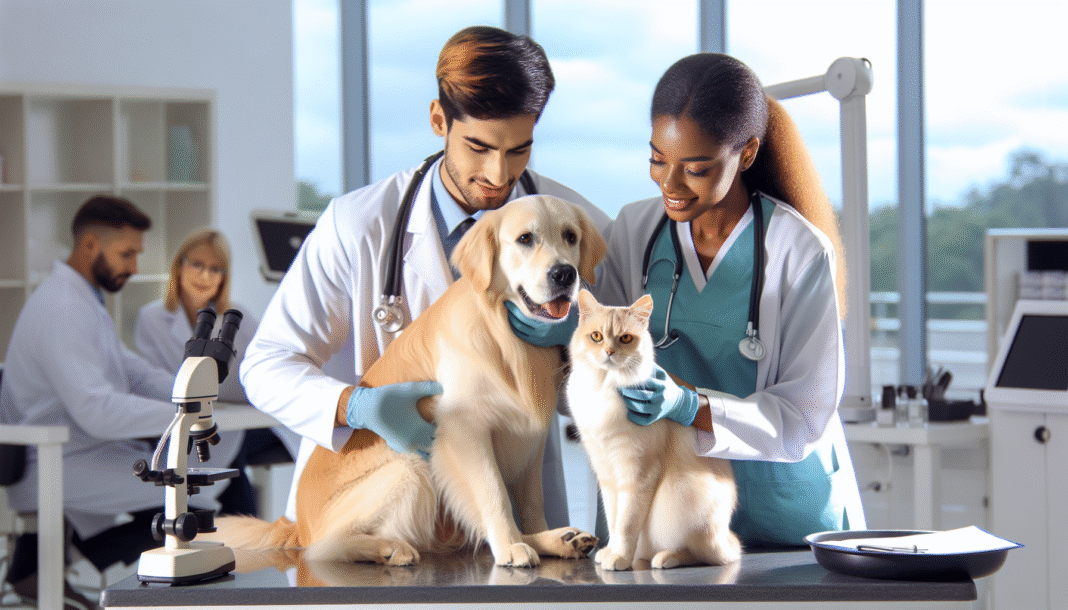Caring for your pet goes beyond regular feeding and exercising; it also includes keeping a close eye on their skin health. Our furry friends can suffer from various skin conditions, which may cause discomfort and distress if left untreated. In this article, we’ll explore common pet skin conditions, their causes, symptoms, diagnosis, treatment options, and preventive measures you can take as a responsible pet owner.
Common Causes of Pet Skin Conditions
Understanding the root causes of skin problems is crucial for effective treatment. Here are some of the most common causes:
Allergies
Pets can be allergic to various substances, including certain foods, pollen, dust mites, and flea saliva. Allergic reactions often manifest as skin irritations that can lead to itching and inflammation.
Parasites
Fleas, ticks, and mites are notorious for causing skin issues. They can lead to conditions such as flea allergy dermatitis, where the pet’s skin becomes extremely itchy and irritated.
Infections
Bacterial and fungal infections can cause significant skin problems. A common example is a yeast infection, which leads to redness, swelling, and often a foul smell.
Hormonal Imbalances
Conditions like hypothyroidism or Cushing’s disease can cause various skin issues, including hair loss and changes in skin texture.
Identifying Symptoms
Recognizing the symptoms of skin conditions in pets is essential for timely intervention. Common signs include:
-
- Itching and Scratching: Frequent scratching, biting, or licking at the skin.
-
- Redness and Inflammation: Look for pink or red patches on their skin.
-
- Hair Loss: Noticeable bald spots or excessive shedding.
-
- Changes in Skin Texture: The skin may appear scaly, flaky, or greasy.
-
- Odor: Foul smells can be indicative of infections.
-
- Bumps or Sores: Development of lumps or areas of irritation.
If you notice any of these symptoms in your pet, it’s time to consult your veterinarian.
Diagnosis of Skin Conditions
Diagnosing a skin condition involves a comprehensive examination by a veterinarian. Here’s what you can expect during the diagnosis process:
Physical Examination
Your vet will conduct a thorough physical check to identify any visible signs of skin issues.
Skin Tests
These may include scraping or swabbing the affected area to check for parasites, bacteria, or fungal infections.
Allergy Testing
If allergies are suspected, your vet may recommend allergy testing to identify specific triggers.
Blood Tests
Hormonal imbalances can be diagnosed through specific blood tests, helping pinpoint underlying health issues.
Treatment Options
Once diagnosed, treatment options will depend on the underlying cause of your pet’s skin condition. Here are common treatment strategies:
Medications
-
- Antihistamines: Helpful for managing allergic reactions.
-
- Steroids: Corticosteroids can provide relief from inflammation and itching, but should be used with caution.
-
- Antibiotics or Antifungals: Typically prescribed for bacterial or fungal infections.
Topical Treatments
-
- Shampoos: Medicated shampoos can help in treating infections and removing allergens.
-
- Creams and Ointments: Localized treatments can provide quick relief from itching and irritation.
Diet Changes
If food allergies are diagnosed, switching to a hypoallergenic diet may alleviate symptoms.
Flea Control
Implementing a regular flea control program is crucial for eliminating and preventing infestations.
Practical Care Tips for Pet Owners
Keeping your pet’s skin healthy involves proactive care. Here are some practical tips:
Regular Grooming
Regular brushing helps remove loose fur and debris that can irritate the skin. It also leads to better skin circulation and can help you catch skin issues early.
Bathing
Use vet-recommended shampoos and follow a regular bathing schedule to keep your pet clean without over-drying their skin.
Environment Management
Keep your home clean and free of dust, mold, and other allergens. Consider using air purifiers and vacuuming regularly.
Nutritional Support
Consult your vet about supplements that support skin health, such as omega fatty acids, which can help maintain a healthy coat and skin.
Stay Alert for Changes
Regularly check your pet’s skin for any unusual changes or signs of irritation. Early detection is key to addressing skin conditions effectively.
Preventive Measures
Prevention is always better than cure. Here are some ways to keep your pet’s skin healthy:
Flea Prevention
Implement a year-round flea and tick prevention plan through vet-approved products.
Avoid Allergen Exposure
Limit your pet’s exposure to known allergens, whether environmental or food-related, and maintain a clean living space.
Regular Vet Check-ups
Routine veterinary visits will help monitor your pet’s overall health, enabling early detection of potential skin issues.
Balanced Diet
Provide a balanced diet tailored to your pet’s needs, ensuring they receive essential nutrients for skin health.
By understanding common pet skin conditions and employing appropriate care and prevention techniques, you’re taking a significant step in ensuring your furry friend remains healthy and happy. Always consult a veterinarian if you suspect your pet may be suffering from a skin condition, and stay informed about their health.





